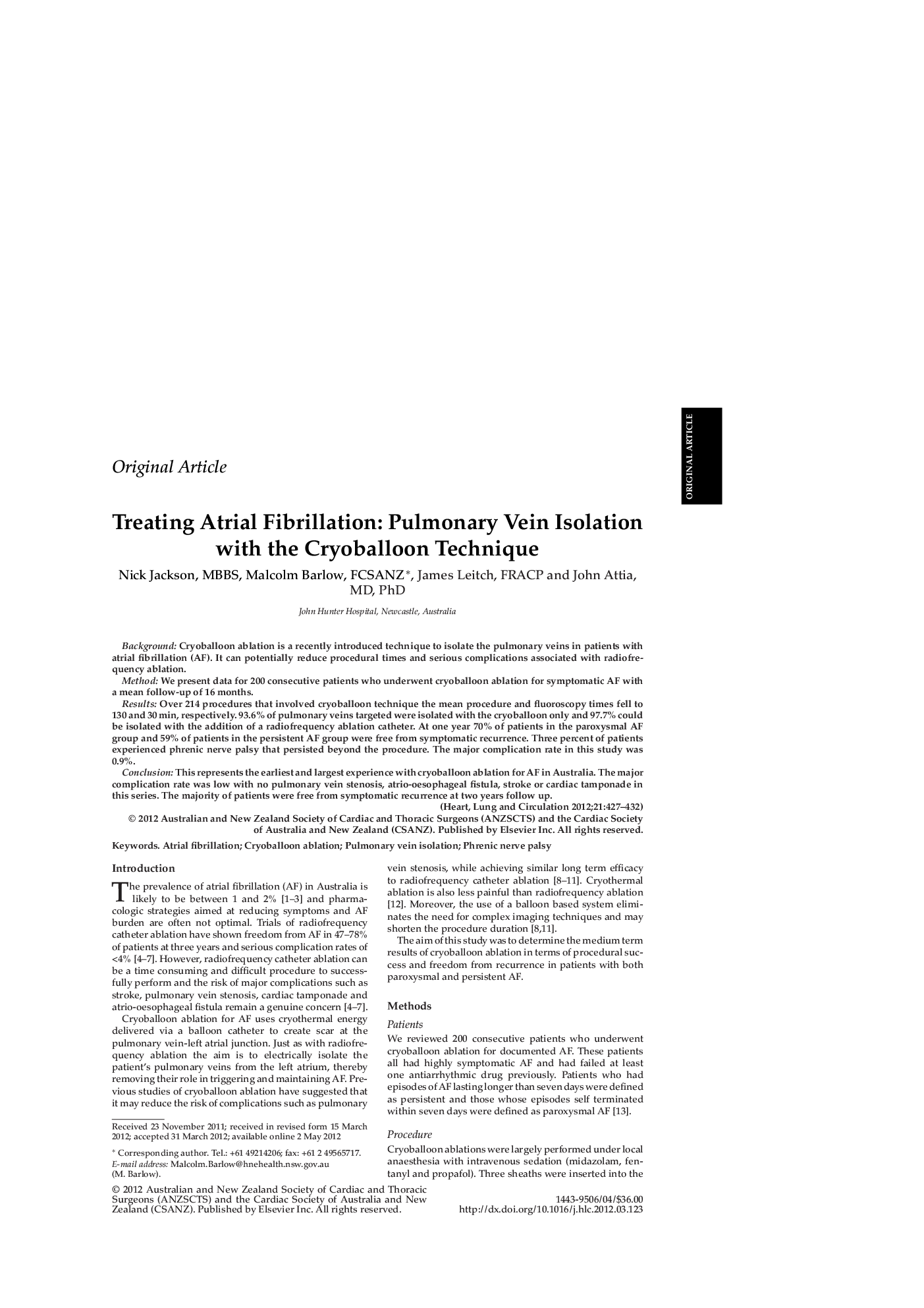| Article ID | Journal | Published Year | Pages | File Type |
|---|---|---|---|---|
| 2919520 | Heart, Lung and Circulation | 2012 | 6 Pages |
BackgroundCryoballoon ablation is a recently introduced technique to isolate the pulmonary veins in patients with atrial fibrillation (AF). It can potentially reduce procedural times and serious complications associated with radiofrequency ablation.MethodWe present data for 200 consecutive patients who underwent cryoballoon ablation for symptomatic AF with a mean follow-up of 16 months.ResultsOver 214 procedures that involved cryoballoon technique the mean procedure and fluoroscopy times fell to 130 and 30 min, respectively. 93.6% of pulmonary veins targeted were isolated with the cryoballoon only and 97.7% could be isolated with the addition of a radiofrequency ablation catheter. At one year 70% of patients in the paroxysmal AF group and 59% of patients in the persistent AF group were free from symptomatic recurrence. Three percent of patients experienced phrenic nerve palsy that persisted beyond the procedure. The major complication rate in this study was 0.9%.ConclusionThis represents the earliest and largest experience with cryoballoon ablation for AF in Australia. The major complication rate was low with no pulmonary vein stenosis, atrio-oesophageal fistula, stroke or cardiac tamponade in this series. The majority of patients were free from symptomatic recurrence at two years follow up.
